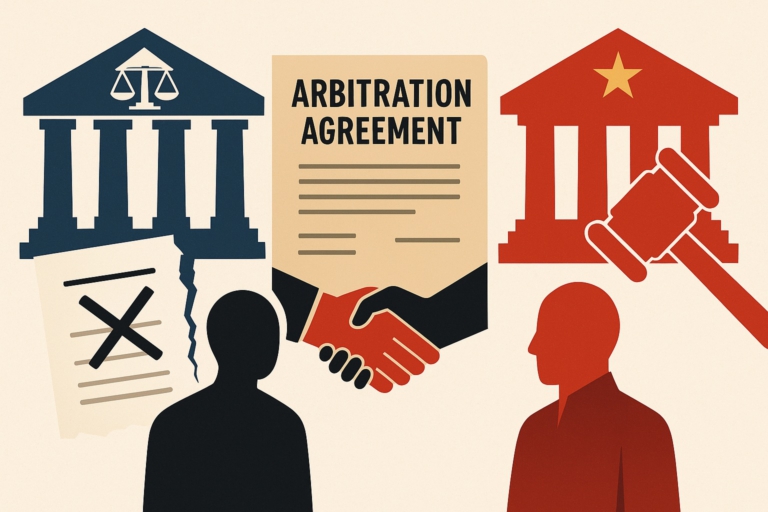
Key takeaways:
- The acceptance of the personal bankruptcy regime in China was marked by the implementation of the Regulations of Shenzhen Special Economic Zone on Personal Bankruptcy in March 2021.
- As of 28 Feb. 2022, the Shenzhen Intermediate People's Court has received 1,031 personal bankruptcy applications, 85 applications per month on average.
- The average age of all debtors is about 40 years old.
- Insufficient financial information and unfamiliarity with bankruptcy procedures are the common features of current personal bankruptcy applications.
- “Honest but unfortunate” is a generalization frequently used by the court to determine whether a debtor should be given bankruptcy relief.
1,031 personal bankruptcy applications were filed in China during the first year of its implementation of the personal bankruptcy system.
The acceptance of the personal bankruptcy regime in China was marked by the implementation of the Regulations of Shenzhen Special Economic Zone on Personal Bankruptcy (深圳经济特区个人破产条例, hereinafter the "Regulations") in Shenzhen, the economic center of southern China, in March 2021.
It is the first time for China to try implementing the personal bankruptcy system, although it is currently limited to Shenzhen rather than nationwide.
The Shenzhen Intermediate People's Court is the court that accepts personal bankruptcy applications. An article titled “Practical Demonstration and System Construction of the Pilot Personal Bankruptcy System (个人破产制度先行先试中的实践示范与体系构建) by Judge Qixuan Cao (曹启选), Judge Jing Xiaojing (景晓晶) and Judge Ye Langhua (叶浪花), judges of the said court, published in “People's Judicature” (人民司法) (No. 22, 2022) introduces how the personal bankruptcy system in Shenzhen has been in the first year after its implementation.
I. Data on personal bankruptcy cases
As of 28 Feb. 2022, the Shenzhen Intermediate People's Court has received 1,031 personal bankruptcy applications, 85 applications per month on average.
Out of 1,031 bankruptcy applications, there are 1,000 cases submitted by debtors. Among them, there are 686 male debtors and 314 female debtors, with a gender ratio of male to female debtors being 7:3.
The youngest debtor is 24 years old, the oldest is 76 years old, and the average age of all debtors is about 40 years old. There are 783 debtors aged between 30 and 40, accounting for 76% of the total number.
According to applicants’ declaration, there are 593 bankruptcy applications due to entrepreneurial failure or poor business management, accounting for 57.5%; 221 bankruptcy applications were filed solely due to debts incurred by daily living expenses, accounting for 21.4%; 176 bankruptcy applications were filed due to speculation, infringement, fraud, and gambling, accounting for 17.1%; 41 bankruptcy applications were filed due to debts incurred by applicants’ borrowing from or providing guarantees to others in their own name, accounting for 4%.
The minimum debt declared by applicants is about CNY 18,000, while the maximum is about CNY 1.6 billion. The median debt of all debtors is CNY 913,100. There are 546 applicants with debts below CNY 1 million, accounting for 53.0% of all applications; there are 371 applicants with debts ranging from CNY 1 million to CNY 5 million, accounting for 36.0%; there are 46 applicants with debts ranging from CNY 5 million to CNY 10 million, accounting for 4.5%; there are 68 applicants with debts over CNY 10 million, accounting for 6.6%, of which 8 applicants are burdened with debts over CNY 100 million, mainly due to the assumption of joint and several guarantee liability for corporate operation.
II. Characteristics of personal bankruptcy cases
1. Insufficient financial information
The financial information submitted by most applicants is insufficient.
The information submitted by most applicants is often incomplete. 181 applicants still fail to meet the statutory requirements in terms of materials and document submission though guidance has been given to them in this respect.
This is because China does not require natural persons to establish their own financial management systems. Therefore, Chinese residents are not accustomed to keeping complete records of assets and debts, and it is difficult for them to provide their own and family’s accurate and comprehensive assets and debt records when suffering from bankruptcy.
2. Unfamiliarity with bankruptcy procedures
Applicants are not proficient in selecting appropriate bankruptcy procedures.
The Regulations of Shenzhen provide applicants with three procedures: liquidation, reorganization, and settlement, but fail to set different entry conditions for the three procedures.
Most applicants only know about liquidation and tend to apply for liquidation. Because the liquidation procedure can exempt debtors from paying off debts that cannot be repaid with their remaining assets.
This conclusion has been proved by the relevant data.
76.5% of applicants hope to initiate the liquidation procedure, but liquidation cases accepted by the court only account for 19.3% of all cases; only 17% of applicants apply for reorganization, while the reorganization cases accepted by the court account for 64.5% of all cases. In contrast, 6.5% of applicants apply for settlement and settlement cases accepted by the court account for 16.1% of all cases.
In judicial practice, the court tends to adopt reorganization and settlement procedures. It only supports a small number of debtors, who have lost their solvency or are having difficulty recovering their solvency, to enter the liquidation procedure. This is because the court hopes to balance the interests of the debtor and creditors as much as possible.
3. Creditors most desire to relieve financial debts
Debts declared by debtors mainly include such types as credit card loans, loans lent by small lending platforms, loans for business operations lent by banks, and private loans.
Among them, credit card loans, debts that debtors most want to be exempted from, account for approximately 78.3% of all declared debts.
In addition, 88% of debtors are liable to financial institution creditors, with one debtor being liable to 30 financial institution creditors.
Most debtors are eager to be given breathing room such as a temporary suspension of debt collection and interest accrual before continuing to repay their debts. However, financial institutions usually do not take the initiative to postpone the debt repayment date due to such considerations as financial regulation and performance appraisal.
Thus, debtors have to resort to personal bankruptcy for the purposes mentioned above.
III. How does the court examine the parties' applications
“Honest but unfortunate” (诚实而不幸) is a generalization frequently used by the court to determine whether a debtor should be given bankruptcy relief.
“Honest” corresponds to the legal principle of good faith, a prerequisite for debtors throughout the bankruptcy proceedings; “unfortunate” corresponds to the legal cause of bankruptcy, an objective fact and reason why debtors become unable to repay the debt incurred during business operation and daily life.
The court will determine whether a debtor is “honest but unfortunate” based on the following considerations during the case trial.
Firstly, whether the debtor truthfully declares their financial conditions;
Secondly, whether the debtor satisfies the requirements for bankruptcy. If the debtor loses the ability to repay debts in full or in part due to business operation and daily life consumption, then their application will be deemed as meeting the legal conditions for bankruptcy;
Thirdly, debtors’ willingness and ability to repay debts. For debtors who are able but unwilling to repay their debts, the court will navigate them through reorganization and settlement procedures; for debtors who intentionally default on their debts, personal bankruptcy procedures will not be applicable;
Fourthly, the information about the debtor provided by creditors and the public; and
Fifthly, other special and controversial considerations. The court is concerned about cases where society at large recognizes that relief should be provided to debtors. For cases where the main debt originates from gambling, crimes, infringement, speculation, and luxury consumption, the court will suspend the application of personal bankruptcy procedures.
Contributors: Guodong Du 杜国栋









